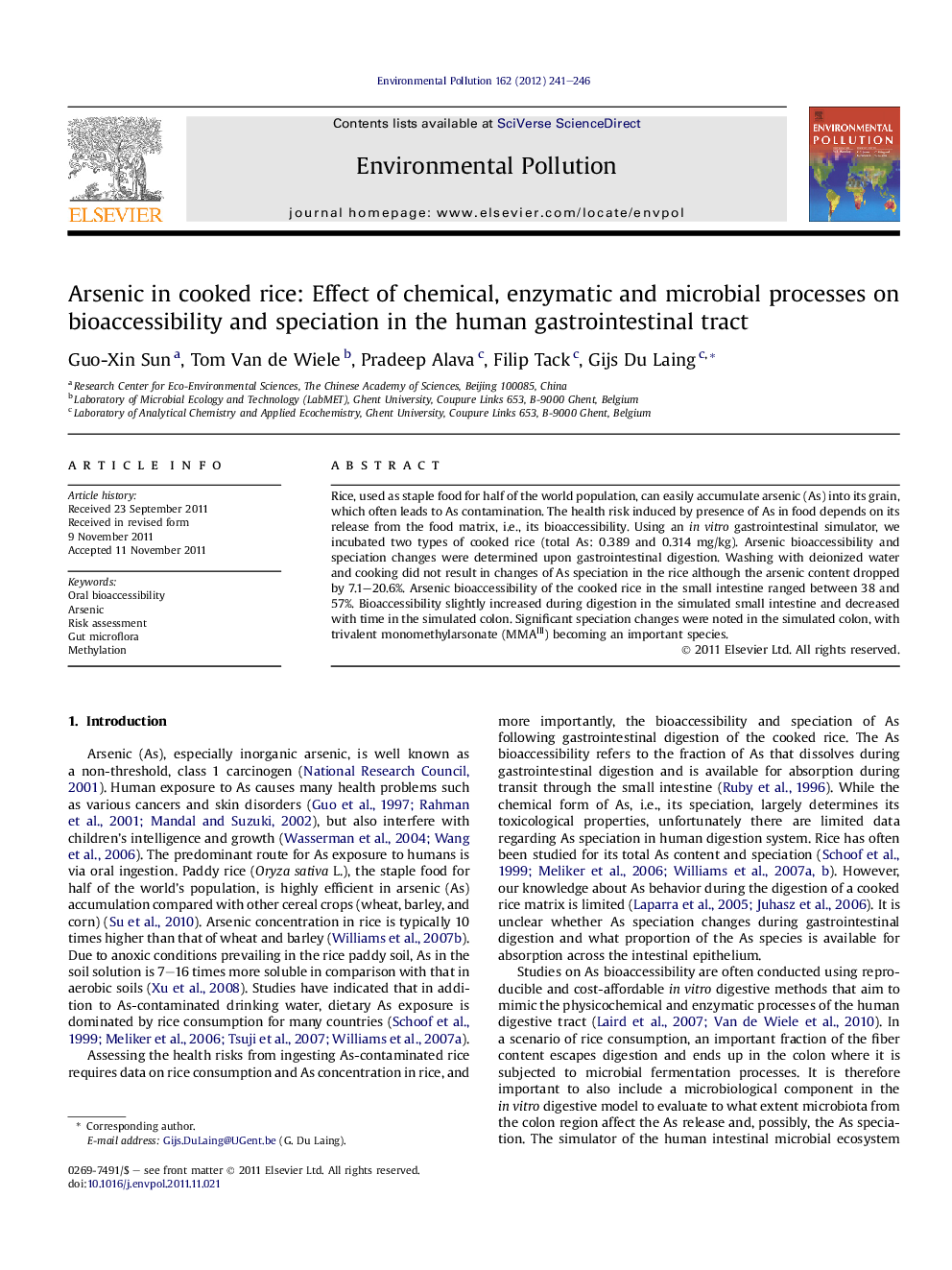| کد مقاله | کد نشریه | سال انتشار | مقاله انگلیسی | نسخه تمام متن |
|---|---|---|---|---|
| 4424977 | 1619210 | 2012 | 6 صفحه PDF | دانلود رایگان |

Rice, used as staple food for half of the world population, can easily accumulate arsenic (As) into its grain, which often leads to As contamination. The health risk induced by presence of As in food depends on its release from the food matrix, i.e., its bioaccessibility. Using an in vitro gastrointestinal simulator, we incubated two types of cooked rice (total As: 0.389 and 0.314 mg/kg). Arsenic bioaccessibility and speciation changes were determined upon gastrointestinal digestion. Washing with deionized water and cooking did not result in changes of As speciation in the rice although the arsenic content dropped by 7.1–20.6%. Arsenic bioaccessibility of the cooked rice in the small intestine ranged between 38 and 57%. Bioaccessibility slightly increased during digestion in the simulated small intestine and decreased with time in the simulated colon. Significant speciation changes were noted in the simulated colon, with trivalent monomethylarsonate (MMAIII) becoming an important species.
► We studied arsenic bioaccessibility and speciation in rice during in vitro digestion.
► Bioaccessibility in cooked rice ranged between 38 and 57%.
► Bioaccessibility increased in the small intestine and dropped in the colon.
► Significant speciation changes were observed in the colon.
► Toxic trivalent monomethylarsonate (MMAIII) was produced in the colon.
Journal: Environmental Pollution - Volume 162, March 2012, Pages 241–246